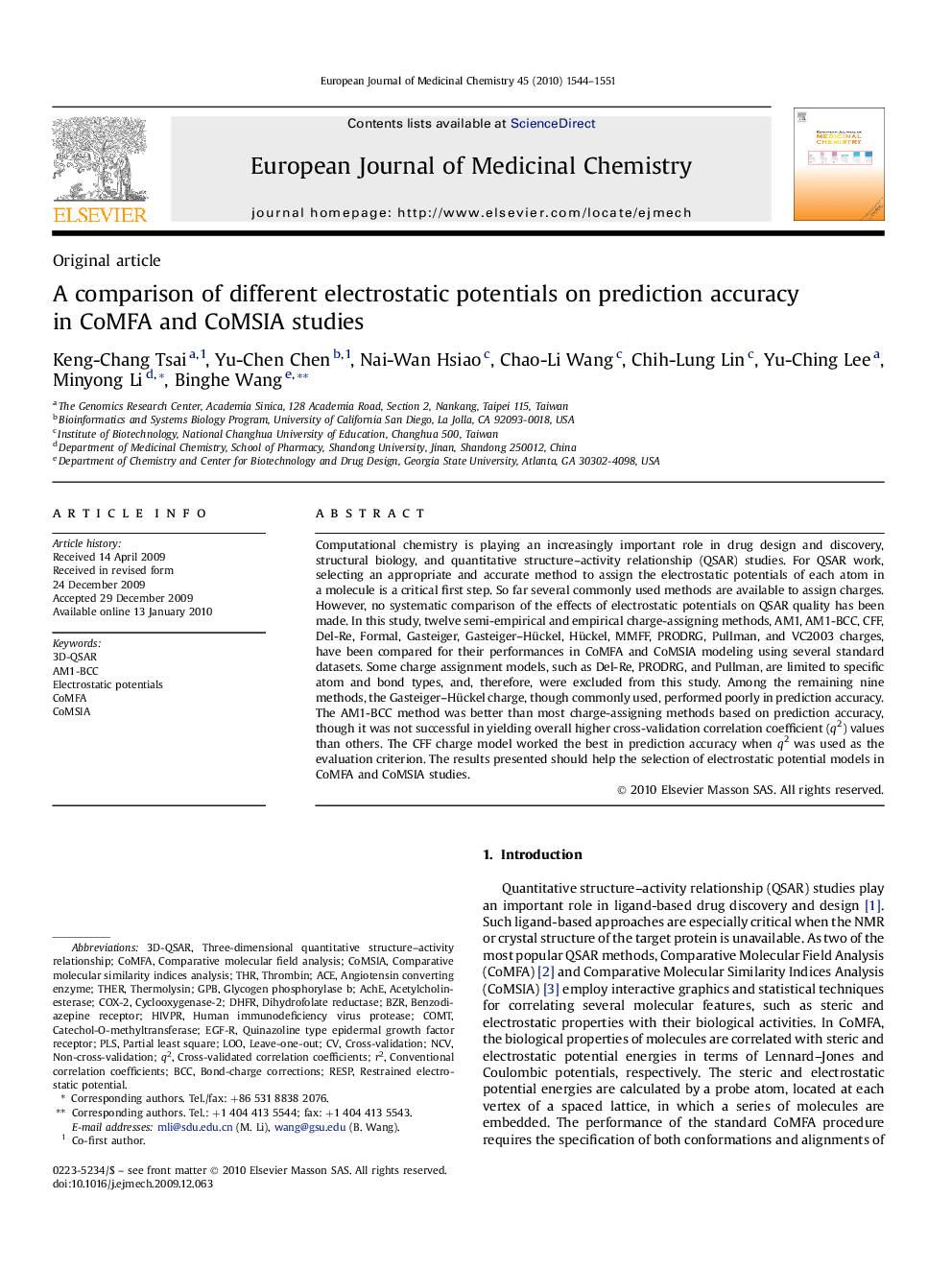| Article ID | Journal | Published Year | Pages | File Type |
|---|---|---|---|---|
| 1399585 | European Journal of Medicinal Chemistry | 2010 | 8 Pages |
Computational chemistry is playing an increasingly important role in drug design and discovery, structural biology, and quantitative structure–activity relationship (QSAR) studies. For QSAR work, selecting an appropriate and accurate method to assign the electrostatic potentials of each atom in a molecule is a critical first step. So far several commonly used methods are available to assign charges. However, no systematic comparison of the effects of electrostatic potentials on QSAR quality has been made. In this study, twelve semi-empirical and empirical charge-assigning methods, AM1, AM1-BCC, CFF, Del-Re, Formal, Gasteiger, Gasteiger–Hückel, Hückel, MMFF, PRODRG, Pullman, and VC2003 charges, have been compared for their performances in CoMFA and CoMSIA modeling using several standard datasets. Some charge assignment models, such as Del-Re, PRODRG, and Pullman, are limited to specific atom and bond types, and, therefore, were excluded from this study. Among the remaining nine methods, the Gasteiger–Hückel charge, though commonly used, performed poorly in prediction accuracy. The AM1-BCC method was better than most charge-assigning methods based on prediction accuracy, though it was not successful in yielding overall higher cross-validation correlation coefficient (q2) values than others. The CFF charge model worked the best in prediction accuracy when q2 was used as the evaluation criterion. The results presented should help the selection of electrostatic potential models in CoMFA and CoMSIA studies.
Graphical abstractFigure optionsDownload full-size imageDownload as PowerPoint slide
